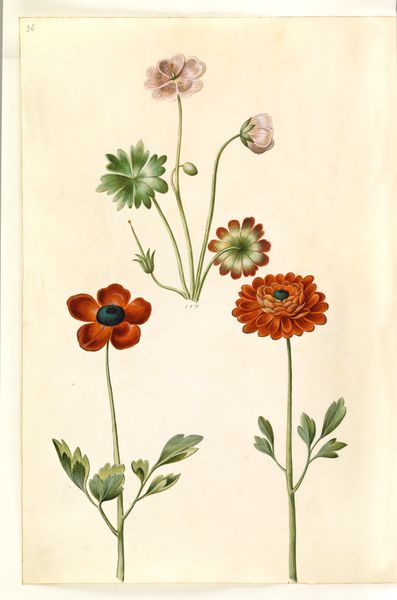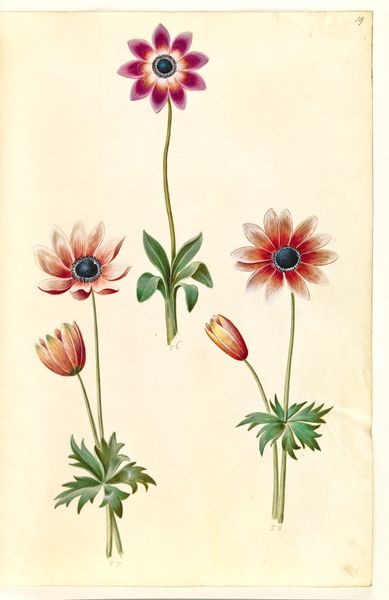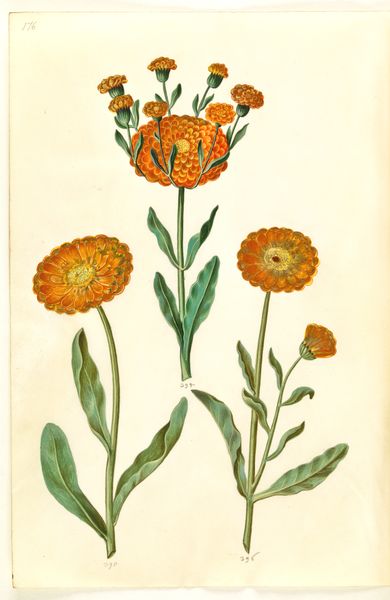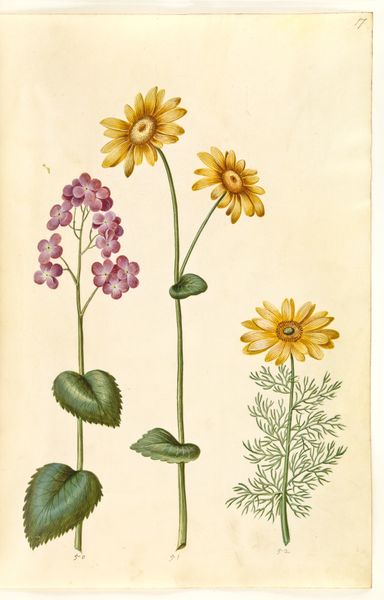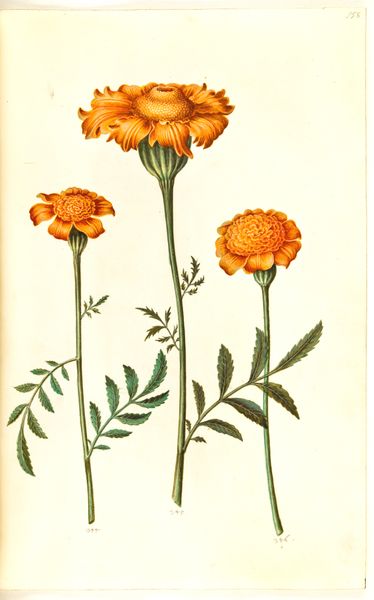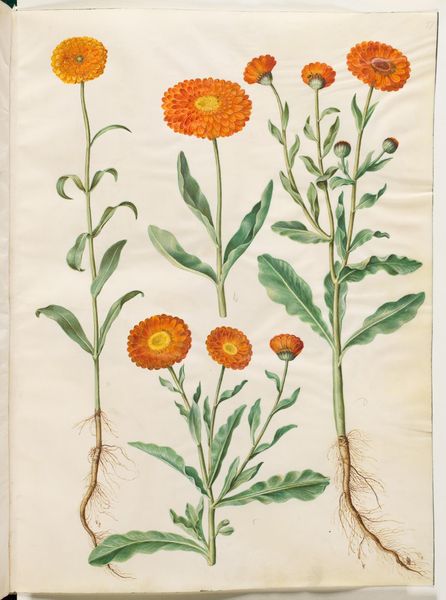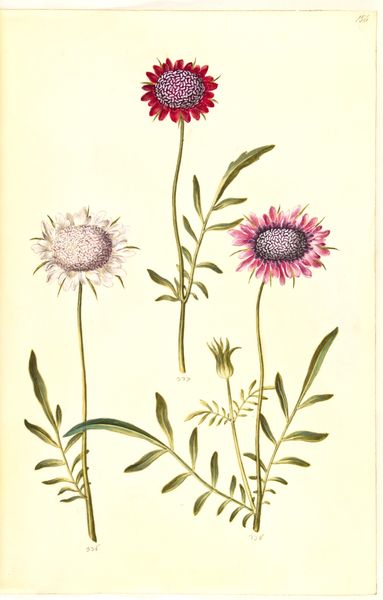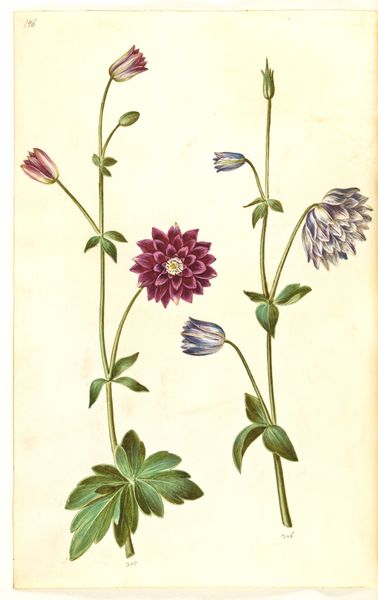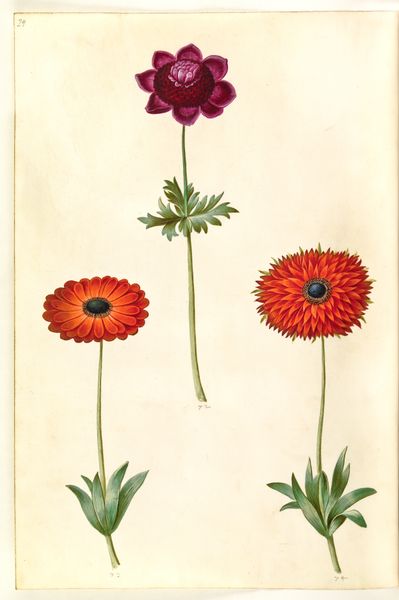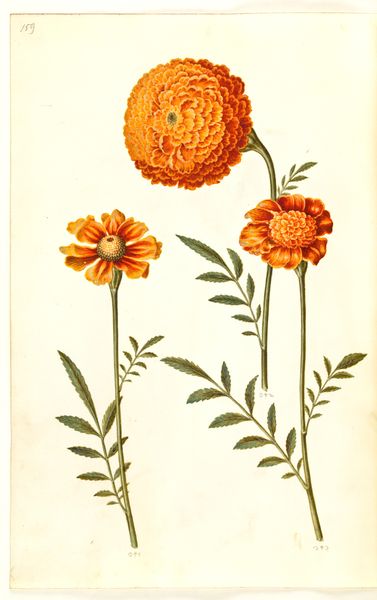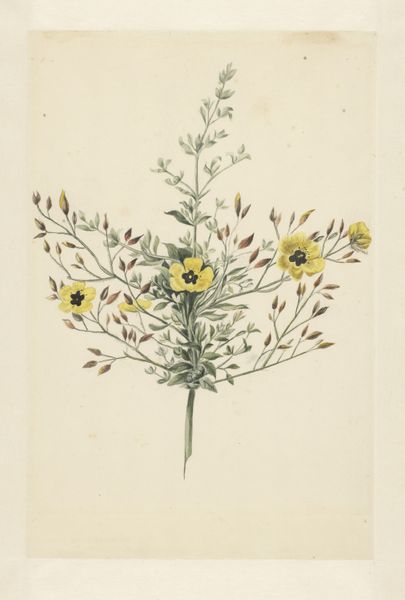
drawing, paper, watercolor
#
drawing
#
water colours
#
landscape
#
paper
#
watercolor
#
folk-art
#
watercolour illustration
#
genre-painting
#
realism
Dimensions: height 660 mm, width 480 mm, height 282 mm, width 177 mm, height mm, width mm
Copyright: Rijks Museum: Open Domain
Curator: Oh, look at this little treasure! Robert Jacob Gordon's "Gorteria diffusa," likely painted between 1777 and 1786. It’s a watercolour and ink drawing on paper, so delicate. Editor: It's certainly delicate. And initially quite pleasing to the eye with its symmetrical blooms and palette of autumnal shades; and yet something about the careful detailing makes me feel slightly uneasy. Curator: Uneasy? Do tell! For me, there's such joy in the precise depiction, the way each petal seems to vibrate with its own unique shading. I feel transported to some forgotten garden. Editor: I think the unease comes from a combination of things. The clinical precision reminds us this isn't just art. Gordon, as a military man and explorer working for the Dutch East India Company, was mapping and classifying the Cape. This piece is imbued with colonial desire and ownership of the local flora. Curator: That's a fascinating lens to view it through! I was getting lost in the colours and shapes. Especially how that one blossom, the central focus, seems to have such an intense, almost hypnotic quality. And there's something so beautiful in his attempt to capture the light on those intricate little leaves. It whispers secrets, doesn't it? Editor: Secrets certainly. And that's why it is imperative to contextualise these botanic artworks, because beneath the surface, they reflect European colonialism's systematic efforts of categorization. How it catalogued the land and dispossessed its peoples to create something from which it can then benefit, financially or scientifically. Curator: So, in a sense, these aren't just pretty flowers then. But loaded objects steeped in history. You’ve given me a new respect for it, actually! Not just for its artistry, but for its power to prompt uncomfortable, necessary discussions about power and representation. Editor: Exactly. By addressing such botanical works through the complex entanglements between nature, knowledge and imperialism, we reveal their hidden histories. And that is far more important than simply admiring its "beauty". Curator: So next time I pass a beautiful illustration like this, I won’t just smile. I'll pause, and ask myself: "What else might this picture be telling me?" Editor: Precisely. Question everything, and always consider who's doing the looking.
Comments
No comments
Be the first to comment and join the conversation on the ultimate creative platform.
